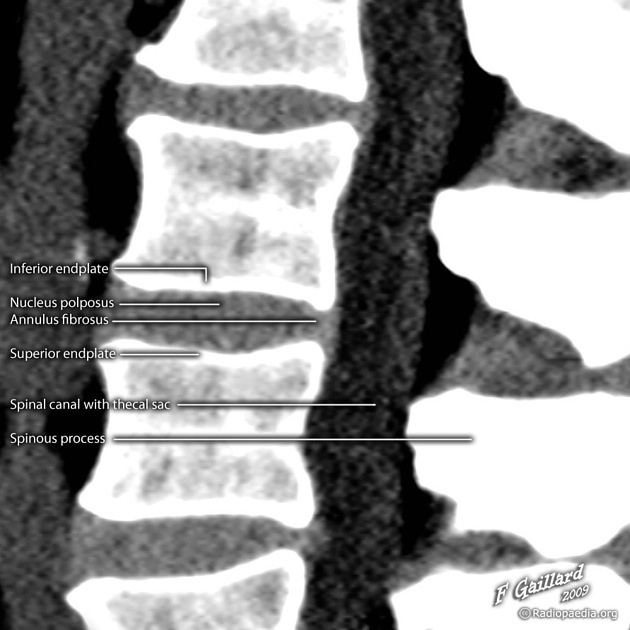nucleus polposus (NP)
The nucleus pulposus (plural: nuclei pulposi) is the central part of each intervertebral disc.
Gross anatomy
It is located within the annulus fibrosus and between the vertebral body endplates. It is composed of a thin lattice of collagen fibers (type II) which traverse though hydrophilic glycosaminoglycans (GAGs - chondroitin sulfate, dermatan sulfate and keratan sulfate). The glycosaminoglycans (chains) are covalently attached to a core-protein to form a polypeptide: proteoglycan.
With aging and degeneration the glycosaminoglycans are replaced with fibrocartilage and the collagen type II replaced with type I (same as the annulus fibrosus).
Disc desiccation is not responsible for disc height loss, as the nucleus pulposus volume remains the same with aging, but rather due to annular bulging and end plate bowing.
Arterial supply
- none: it receives nutrition via diffusion across the vertebral body endplates
Venous drainage
- none: waste passes via diffusion across the vertebral body endplates
Innervation
- none
Radiographic features
MRI
- high content of water which gives a normal disc its characteristic high T2 signal on MRI
- generalized loss of high T2 signal in the disc is due to age-related disc desiccation
- a linear T2 hypointense signal through a disc in a young person may be a normal variant called an "intranuclear cleft", a band of fibrous tissue through the nucleus pulposus
Related pathology
Siehe auch:
und weiter:

 Assoziationen und Differentialdiagnosen zu Nucleus pulposus:
Assoziationen und Differentialdiagnosen zu Nucleus pulposus:
